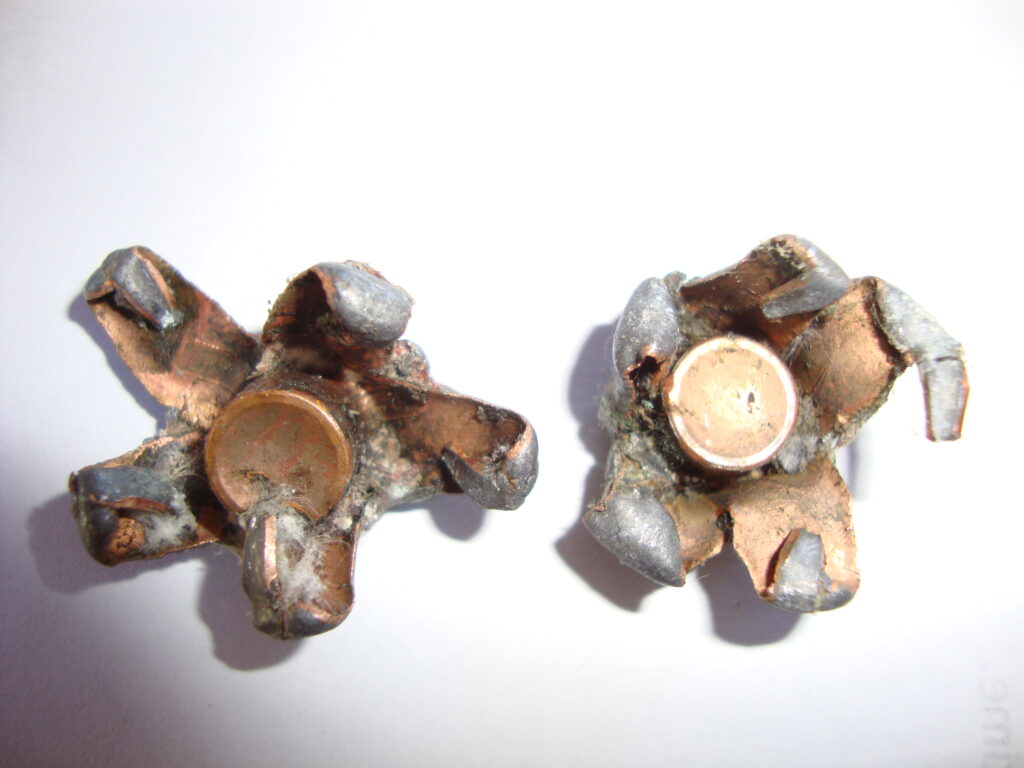This story actually started way back in 1960 with an article by Dr. Wendell G. Swank from Michigan State College which was in the Sports Afield Gun Annual. He and a fellow doctor took their old pre-64 Winchester Model 70 .30-06 Springfield rifles with Sierra bullets to Uganda to harvest game for research.
They did a fantastic job of taking pictures of the bullets recovered and the details of each bullet’s performance. Not only did they take plains game normally associated with the .30-06 Springfield, they also took hippo, lion and even a Cape buffalo.
That article intrigued me so much, I still have the original copy which has prompted me to research .30-06 Springfield performance ever since.
My first “deer” rifle was a lever action .30-30 Winchester, but my second was a Remington pump action .30-06 Springfield. I don’t think in the past 50 plus years, there has ever been a time that I did not have at least one or two .30-06 Springfield rifles laying around.
At first, I used factory Remington 180-grain RN Core Lokts and all the deer I shot fell over just fine. Then, as time progressed, I took up reloading and have since taken deer, elk, moose, caribou, antelope and mountain goat in North America with various bullets.
I started out using the same 180-grain Sierra bullets Dr. Swank used. I tried just about every bullet and powder combo I could come up with and ended up mostly using the 180-grain Nosler Partitions.
Eventually, I took the .30-06 Springfield to Africa several times, as it was my intention to field test as many bullets as I could.
Over the years, I have tested the following bullets there:
180 gr Hornady SP BT
180 gr Speer Hot Core
190 gr Hornady SP BT
180 gr Speer SP BT
220 gr Hornady RN
220 gr Sierra RN
180 gr Hornady SP FB
165 gr Sierra SP BT
180 gr Nosler Partition
180 gr Winchester Fail Safe
180 gr Remington RN Core Lokt
150 gr Barnes TSX
180 gr Speer Deep Curl
180 gr Sierra BT
180 gr Nosler Accubond
168 gr Barnes TSX & TTS

The pictures above are new 180-grain Speer Deep Curls I tested on African plains game. They are good bullets for deer or blesbok, but not tough enough for elk or wildebeest.
Each of the above-mentioned bullets has its own distinctive characteristic performance. The typical soft point bullets all seem to kill about the same but the premium bonded core bullets give much more dependable penetration and the Barnes TSX and TTSX outperforms them all.
On my most recent trip, I shot six Blesbok with six different bullets and found that it made no difference at all. Each was shot about the same distance and they were all about the same broadside lung shots. Every bullet gave complete penetration and each animal rarely went more than a few yards before going down.
If you were to make me choose any one of the “common” lead core bullets to use from now on, my choice is surely going to surprise you as I would take the 220 grain Nosler Partition as my first choice and the 220 grain Sierra RN next.
These two bullets will almost always penetrate completely and leave a nice exit hole. They will not give you the instant kills of high-speed bullets, and the animals will seldom drop at the shot, however, they will only go a few yards before expiring.
Yeah, yeah, I can see the readers jumping up and down about the “rainbow” trajectory of those bullets. But just a minute! A 220-grain Nosler Partition at 2400 fps., zeroed in at 2.9” high at 100 yards, is dead on at 200 yards.
The 180-grain Partition at 2700 fps zeroed 2” high at 100 yards is dead on at 200 yards, so no big deal.
I am being conservative with my 220-grain velocities at 2,400 fps as the Nosler Reloading Guide #4, page 329, shows loads up to 2,602 fps. For most shooters 200 yards is plenty far to shoot. And, if you can crawl up to 200 yards, you will never know the difference in trajectory. However, you will see a huge difference in performance on game, as those 220-grain bullets really put the hammer down.
I remember an outfitter in Zimbabwe many years ago whom I sent home with some 220-grain Sierra RN bullets. When I met up with him the next year, he said they were the most dependable bullets in the .30-06 Springfield he had ever used.
As you can well imagine, this whole bullet subject can be cussed and discussed much like religion and politics long into the night, however, the truth will end up being the .30-06 Springfield, with well-placed shots, will take on any plains game Africa has to offer.
Another nice thing about the .30-06 Springfield is, virtually anywhere in the world you go, should you lose your luggage and ammo, you can usually scare up a box of ammo somewhere. It may not be your first choice of brand or bullet, but it beats having none at all.
Not having or being able to find ammo is my number one contention with the new RUM and WSM cartridges. Unless the fellow who hunted there ahead of you left his ammo, you do not have a snowball’s chance of buying any abroad.
Way back in 1960, those fellows were on the right track and not much has really changed since then.
We have seen many great advances in bullet construction and technology with John Nosler’s first Partition bullets all the way thru the Jack Carter’s Trophy Bonded Bear Claws, and now the Hornady and Barnes lead free bullets.
As usual, it all boils down to “Bullet Placement”. If you do your job the old “ought six” will do its job.

